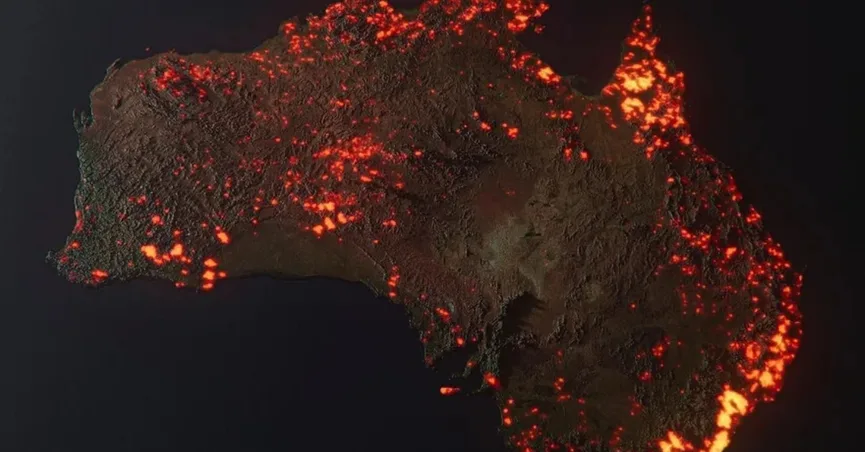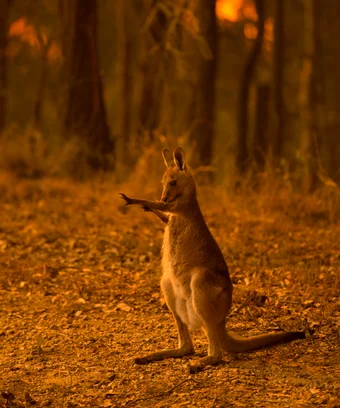New South Wales Fires, an environmental war zone
- Adelaide Green

- Jan 6, 2020
- 3 min read
Updated: Apr 3, 2020
Since September, Australia has been facing a national crisis of brush-fires burning their way through the country, killing more then 20 people and destroying over 1000 homes.
The impact of these fires goes further then the fires themselves; diving into the response towards them, the environmental impact of them, as well as the narrative of how this impacts the rest of the surrounding world.
Worldwide Response, or lack thereof:
Simply, what has taken so long for us to finally hear about this emergency? For months social media and news platforms have covered everything but the severity of this catastrophe.
Well, according to an article by David Wallace-Wells, Global Apathy Toward the Fires in Australia Is a Scary Portent for the Future, these fires have been treated as a “scary, but not apocalyptic, local news story.”
Wallace-Wells conducts a comparison between the California wildfires of 2017 and 2018 to these fires in Australia. Part of the lacking in coverage of this crisis comes from the scale of damage. The Camp Fire in California was fast, devastating, and destructive- all in the first four hours.
The Intelligencer article continues building on the terrifying idea of people learning to live in a world where fires are just a normal year-round occurrence, like droughts or flooding.
The second reason for lacking global outcry and assistance, is the U.S and Western Europe have catered more attention to the “small-scale suffering” of the “wealthy west” than “for those suffering already so dramatically from climate change in Asia and especially in the global south.”
Wallace-Wells, concludes that until climate change is taken seriously by governments and that humanity starts showing more empathy- then our planet has more tests coming our way.
Environmental Battlefront:
In contrast to Wallace-Wells, an article produced by CNet.com goes into details on what actions are being made now.
Jackson Ryan’s article, Australian fires: Everything we know and how you can help, also continues to answer some of the most pressing questions, including the impact these fires have on greenhouse gasses and the impact on habitats.
In terms of the greenhouse gasses, Ryan explains that though the fires were not started by the gasses, they are emitting high levels of carbon dioxide.
“In just three months, Australia's fires are estimated to have released 350 million metric tons of carbon dioxide. Experts warn a century or more will be needed to absorb the carbon dioxide released.”
University of Sydney ecologists estimate that up to 480 million animals may have perished, including up to 8,000 koalas due to the fires rampaging through forests and vegetation.
Though there have been some misleading thoughts behind these fires leaving the koala "functionally extinct," experts do not state this to be true, but do say they are at risk.
Pleading People, what is happening?
In reports made in BBC’s article, Australia fires: Thousands flee to beach to escape, images of children wearing face masks sitting in lawn chairs evokes fear, panic, and empathy for the Armageddon around them.
As people are being chased to the beaches, they are awaiting boats to recue and evacuate them, some getting ready to jump in the waters as they hear the fires roaring.
The severity of these fires is put into perspective three different ways:
Looking at this first image, is all of the locations of the fires, each color representing the age of the fire.
If you click the image, it takes you to MyFireWatch, where you can see all the fires, and compare them to previous years.

The second is comparing the size of Australia to the U.S. By comparing the mass of the country to us, we can get an understanding of what this could be like in our lives.
The final one is from an interactive map that allows you to see the fire coverage over a city. Here we used St. Petersburg as the example. By showing the amount of land that has burned shows what it would be like in our home. If you click on the image, it opens up to The Guardian's website with the interactive map.
What about me? What can I do?
You can help by donating to The NSW Rural Fire Service, The Port Macquarie Koala Hospital, The Kangaroo Island Wildlife Park, and many more. You can also bring awareness by Tweeting and staying updated by using and following the hashtag #NSWFires and #ProtecttheIrreplaceable.
Sources:














Comments